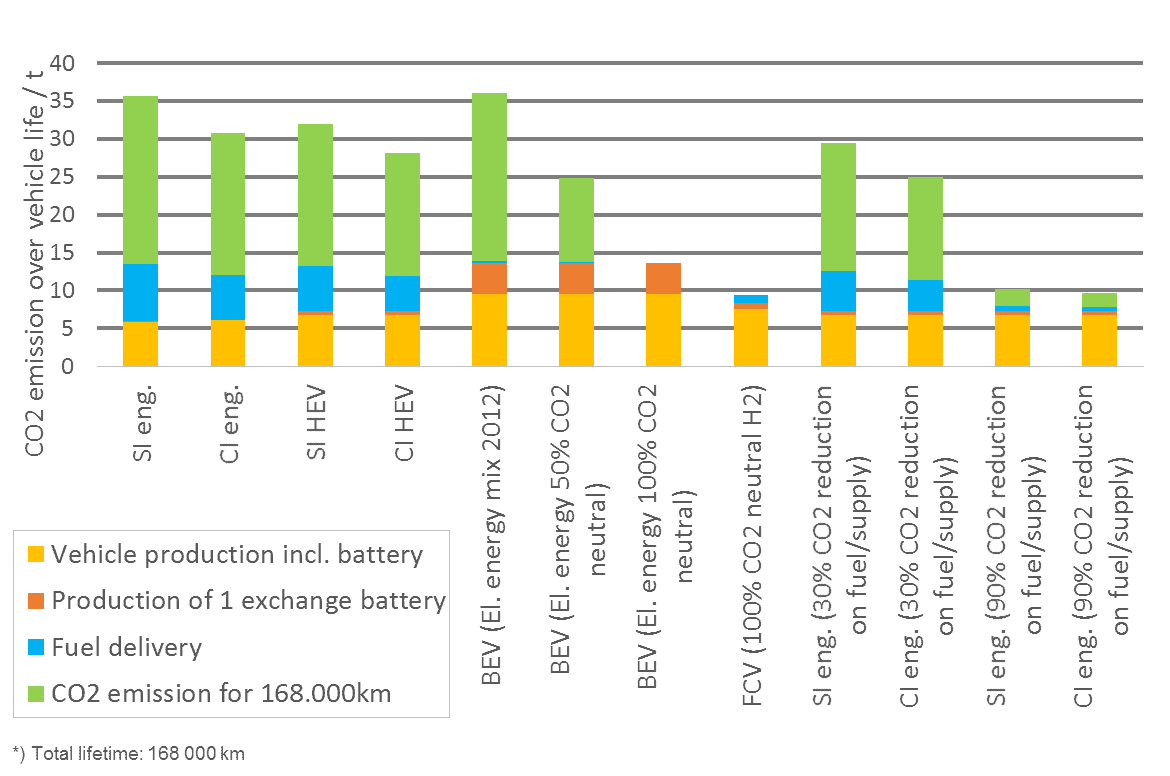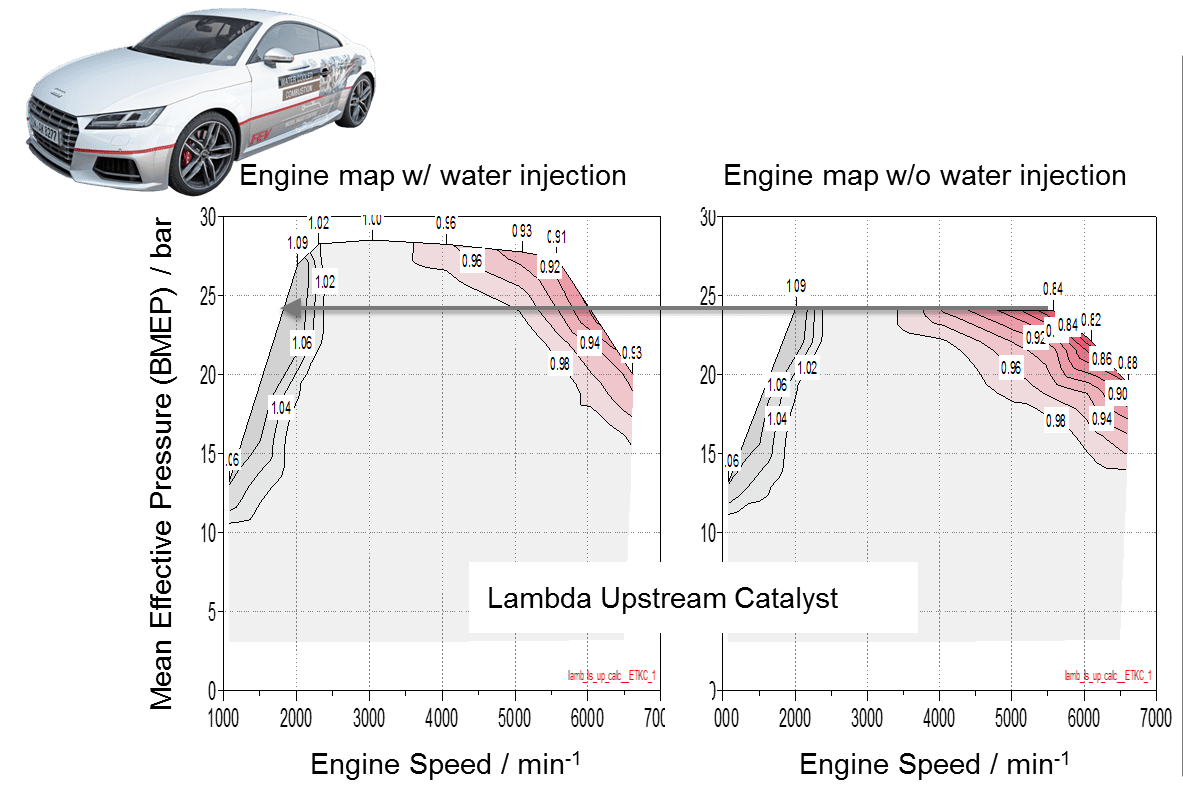
Emission Requirements
Ways to Achieve Low-Emission Powertrain Solutions
Increasingly rigorous legal requirements are having an unprecedented effect on trends in the development of future powertrains. In particular, the rules on significantly lower fleet fuel consumption and stricter emissions targetsare placing huge demands on powertrain development. Figure 1 shows these requirements quite clearly. On top of that, legal certification cycles are taking big steps toward real driving emissions (RDE), which represents a further tightening of the requirements.
Figure 2 provides an overview of the energy required throughout a vehicle’s lifetime, assuming 168,000 km for different powertrain designs. It shows that, in general, a significant reduction in energy consumption can simply be achieved with the hybridization of conventional vehicles.
Therefore, the most practical method appears to be a combination of electrification, optimization of internal combustion engines, and the simultaneous introduction of synthetic fuels.

A battery electric vehicle (BEV) ensures considerable reductions in local emissions, making them particularly suitable for heavily populated areas. Taking Germany’s energy mix into account, a BEV today requires roughly the same total amount of energy as a conventional vehicle with a gasoline engine. This is based on the assumption that the battery will need to be replaced once in a 10-year timespan. For example, as soon as 90% of fuels are produced from renewable energies, the energy requirements for hybrid vehicles with an internal combustion engine drop to levels below those for battery-powered vehicles. Similar low levels are seen for vehicles with fuel cell powertrains using hydrogen derived from renewable energy sources.
In particular, improved battery recycling will lower the energy consumption of battery-powered vehicles in the future to a level comparable to that of vehicles with hybrid and fuel cell drives.
Below are two examples of ways to improve conventional combustion powertrains.
Figure 3 illustrates the effect of hybridization on the RDE of a modern diesel engine measured using Worldwide Harmonized Light Vehicles Test Cycles (WLTC), as well as under various severe, real driving conditions. The diagram on the left indicates the effect on fuel consumption, while the one on the right shows the nitrogen oxide emissions.
Even moderate hybridization (P0-MHEV), with a 48-V electric compressor, reduces fuel consumption by roughly 5 percent under all conditions. With more extensive hybridization (P2-HEV), fuel consumption can be lowered by up to 20 percent compared to a conventional powertrain.
A similar picture emerges when examining the numbers for nitrogen oxide emissions. The strictest future limits on emission levels can be achieved with the aid of hybridization.

Significant improvements in efficiency and emissions can also be attained in the area of gasoline engines. Figure 4 shows an FEV demonstration vehicle equipped with a water injector. There are various benefits to water injection. For one, it increases the full load, which can be translated into improved fuel consumption with a corresponding increase in the gear ratio. As an alternative, the cooling effect of the water on the combustion chamber can be used to significantly reduce the need for enrichment. This will enable even stricter emission limits projected in the future be met. The amount of water consumed depends heavily on the driving profile.

Work is currently being performed on different solutions for providing the necessary water. One solution could be a second tank, such as the urea tanks used in a similar fashion on diesel vehicles. Another direction being taken by developers focuses on capturing water inside the vehicle.
As a result, we can conclude that optimized internal combustion engines,including those connected with hybridization,can help lower CO2 and exhaust emissions now and in the future. Especially for inner-city applications, battery electric vehicles appear to be an effective solution for ensuring completely emission-free mobility in localized areas. Similar goals can be achieved with alternative fuels, such as fuel cell vehicles.
The past has shown that development will be driven by competing technologies, ultimately leading to the best solution.

